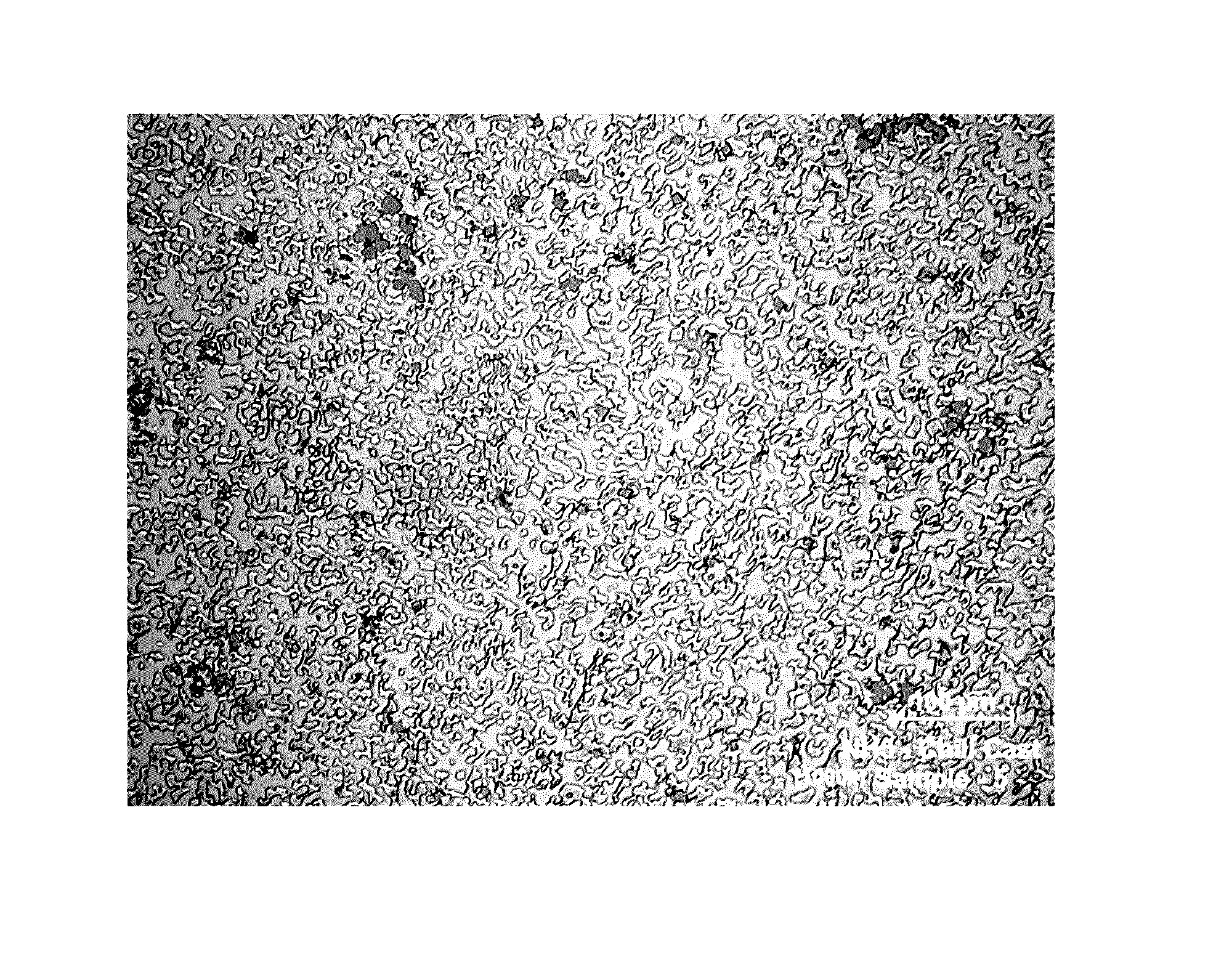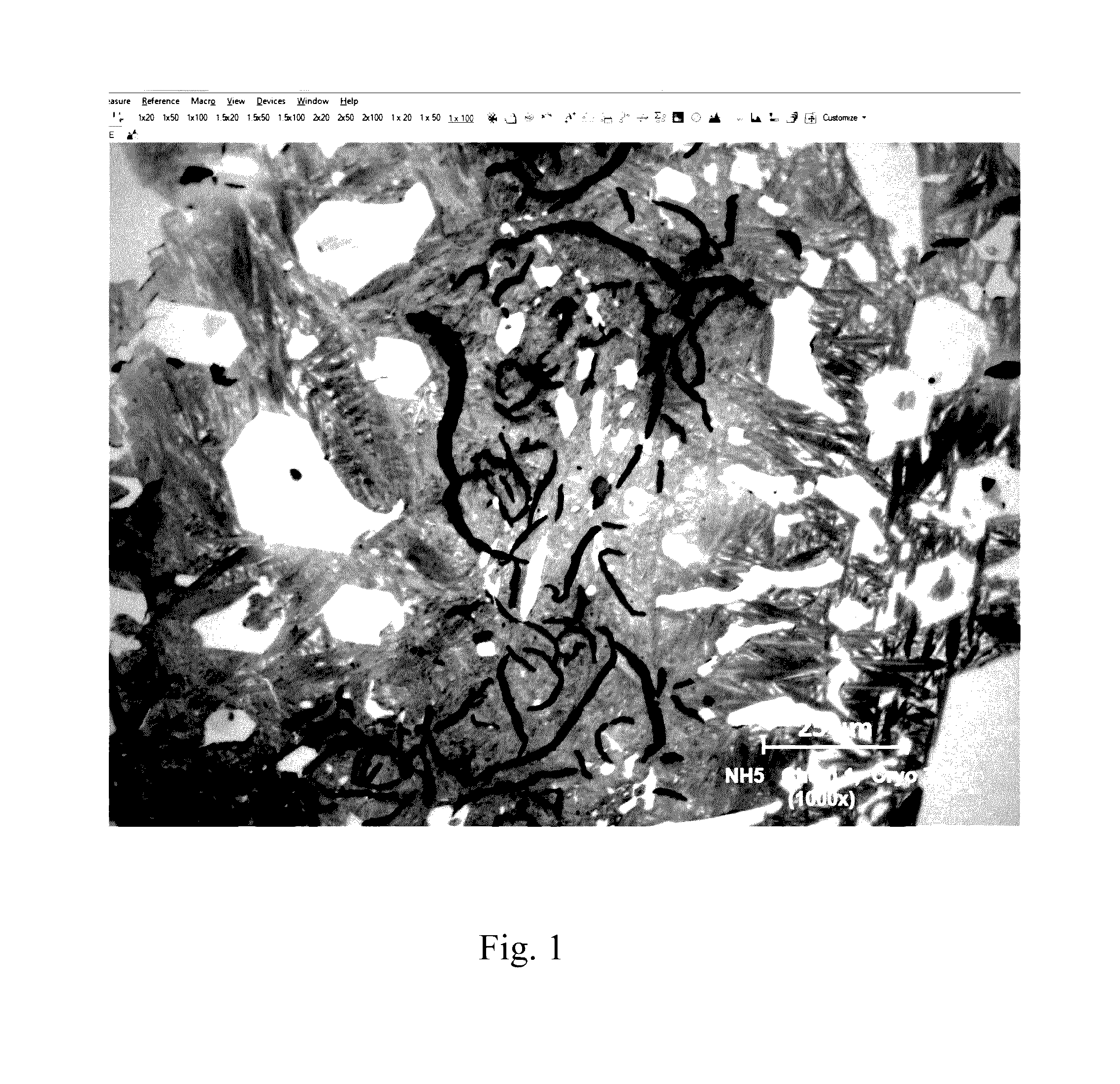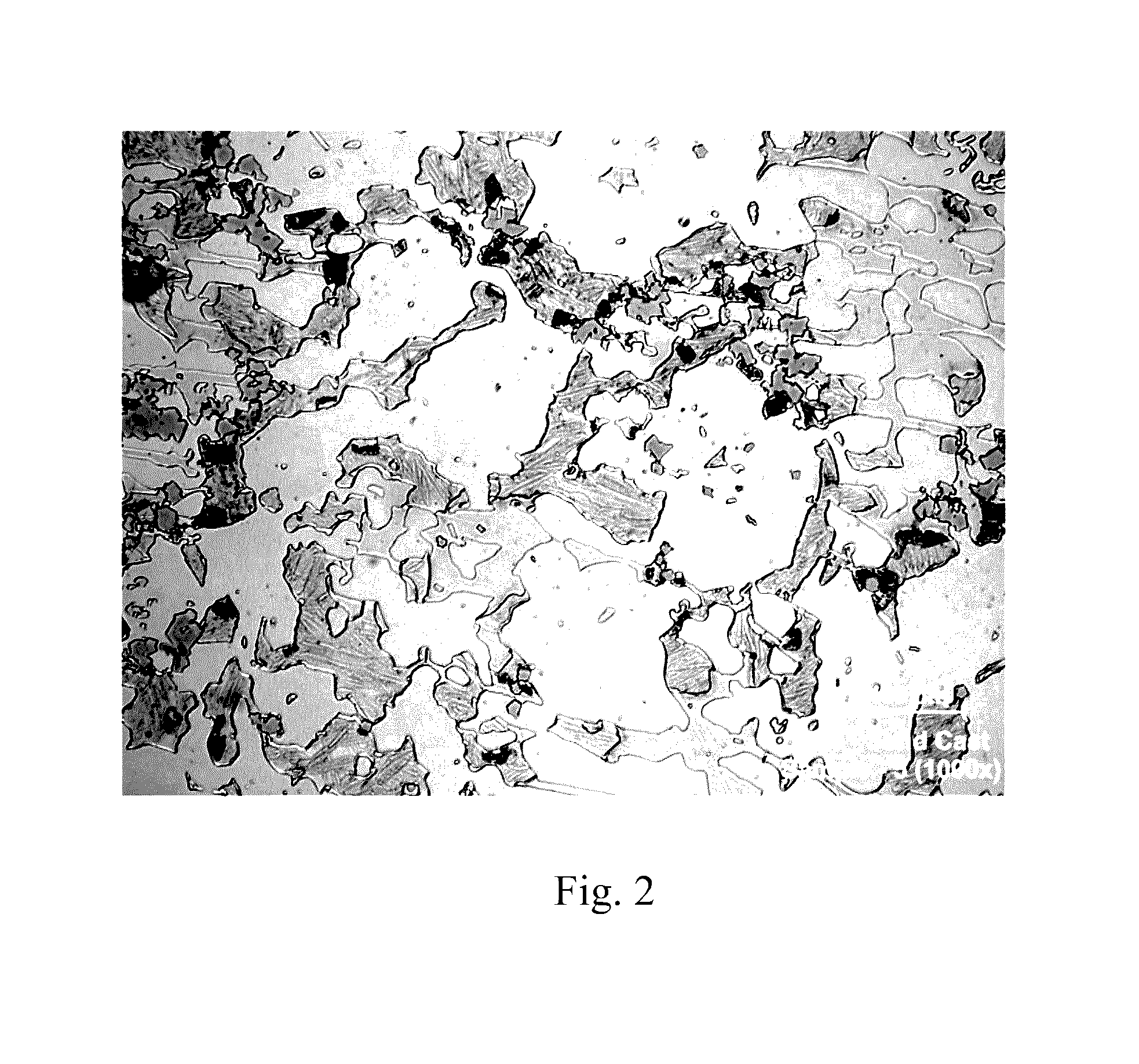Hypereutectic white iron alloys comprising chromium, boron and nitrogen and articles made therefrom
a technology of white iron alloys and chromium, which is applied in the field of hypereutectic white iron alloys, can solve the problems of affecting the appearance of the article, and affecting the wear resistance of high chromium white iron alloys
- Summary
- Abstract
- Description
- Claims
- Application Information
AI Technical Summary
Benefits of technology
Problems solved by technology
Method used
Image
Examples
examples 1 to 5
[0064]Five alloys having the chemical compositions set forth in Table 1 below (in % by weight, S<0.025, P<0.1, Fe:Bal.) were melted in a 30 kg high frequency induction furnace. The initial charge materials were steel scrap, ferroalloy and pig iron. The melt temperature was controlled at 2700° F. to 2790° F. After all the charge materials had melted in the furnace, the liquidus temperature of the alloy was determined to be: Alloy 1—2197.4° F. Alloy 2—2185.7° F., Alloy 3—2165° F., Alloy 4—2167.4° F., Alloy 5—2199.9° F. Then the molten alloys were poured at a temperature of 2400° F.±10° F. into sand molds with dimensions of 20 mm×20 mm×110 mm to obtain four samples for testing for each alloy. In addition for chill casting each alloy was poured into a copper mold (30 mm diameter×35 mm height). The castings were cooled to ambient temperature both in the sand molds and the chill molds.
[0065]
TABLE 1Alloy No.CSiMnCrNiMoVTiNbNBAl1 (compar-3.782.21.58.85.60.432.20.450.770.0130.00.67ative)23.7...
examples 6 to 15
[0072]Ten alloys having the chemical compositions set forth in Table 4 below ((in % by weight, S<0.025, P<0.1, Fe:Bal.) were melted in a 30 kg high frequency induction furnace. The initial charge materials were steel scrap, ferroalloy and pig iron. The melt temperature was controlled at 2700° F. to 2790° F. Then the molten alloys were poured at a temperature of 2550° F.±10° F. into sand molds with dimensions of 20 mm×20 mm×110 mm to obtain four samples for testing for each alloy. In addition for chill casting each alloy was poured into a copper mold (30 mm diameter×35 mm height). The castings were cooled to ambient temperature both in the sand molds and the chill molds.
[0073]
TABLE 4AlloyNo.CSiMnCrNiMoVTiNbNBAl 64.31.663.514.11.51.63.10.500.1200.38(comp.) 73.91.953.613.72.21.53.30.4600.111.130.45 84.12.13.917.52.11.63.80.1800.1000.03(comp.) 93.72.43.117.22.031.483.70.400.081.340.44104.01.74.325.92.21.23.30.3800.1800(comp.)113.81.94.124.81.91.13.50.4400.151.280.39124.32.24.731.31.80.7...
examples 16 to 19
[0079]Large castings for a 3400 lbs. suction liner were made from the four alloys whose composition (in % by weight, S<0.025, P<0.1, Fe:Bal.) is set forth in Table 7 below.
[0080]
TABLE 7AlloyNo.CSiMnCrNiMoVTiNbNBAl164.552.290.99.236.70.283.050.650.000.040.480.14173.112.370.938.486.360.272.730.620.020.0361.880.3184.412.34.733.20.160.965.190.040.000.310.220.02193.931.86.229.51.80.557.10.20.000.240.550.06
[0081]The Brinell (HB) hardness values measured on the samples (cast in sand mold, cast in chill mold, and in each case also after cryogenic hardening) are set forth in Table 8 below.
[0082]
TABLE 8Sand cast Chill cast plusplusAlloycryogeniccryogenicCom-No.Sand casthardeningChill casthardeningments16744 HB782 HB782 HB852 RB17782 HB812 HB852 HB940 HB18744 HB760 HB782 HB812 HB19744 744 HB812 HB852 HB
[0083]The CBNVF values for Alloy Nos. 16-19 were determined according to the equations provided above and are set forth in Table 9 below.
[0084]
TABLE 9Alloy No.16171819(CBNVF)56916867± 3 (%)
PUM
| Property | Measurement | Unit |
|---|---|---|
| Fraction | aaaaa | aaaaa |
| Fraction | aaaaa | aaaaa |
| Fraction | aaaaa | aaaaa |
Abstract
Description
Claims
Application Information
 Login to View More
Login to View More - R&D
- Intellectual Property
- Life Sciences
- Materials
- Tech Scout
- Unparalleled Data Quality
- Higher Quality Content
- 60% Fewer Hallucinations
Browse by: Latest US Patents, China's latest patents, Technical Efficacy Thesaurus, Application Domain, Technology Topic, Popular Technical Reports.
© 2025 PatSnap. All rights reserved.Legal|Privacy policy|Modern Slavery Act Transparency Statement|Sitemap|About US| Contact US: help@patsnap.com



